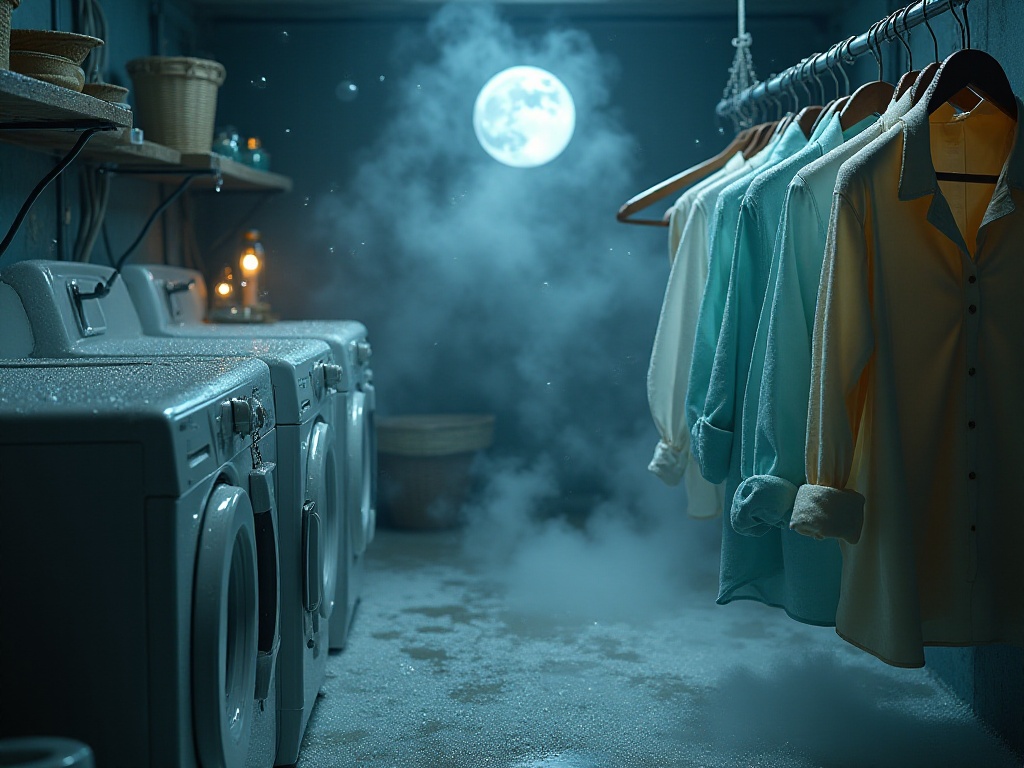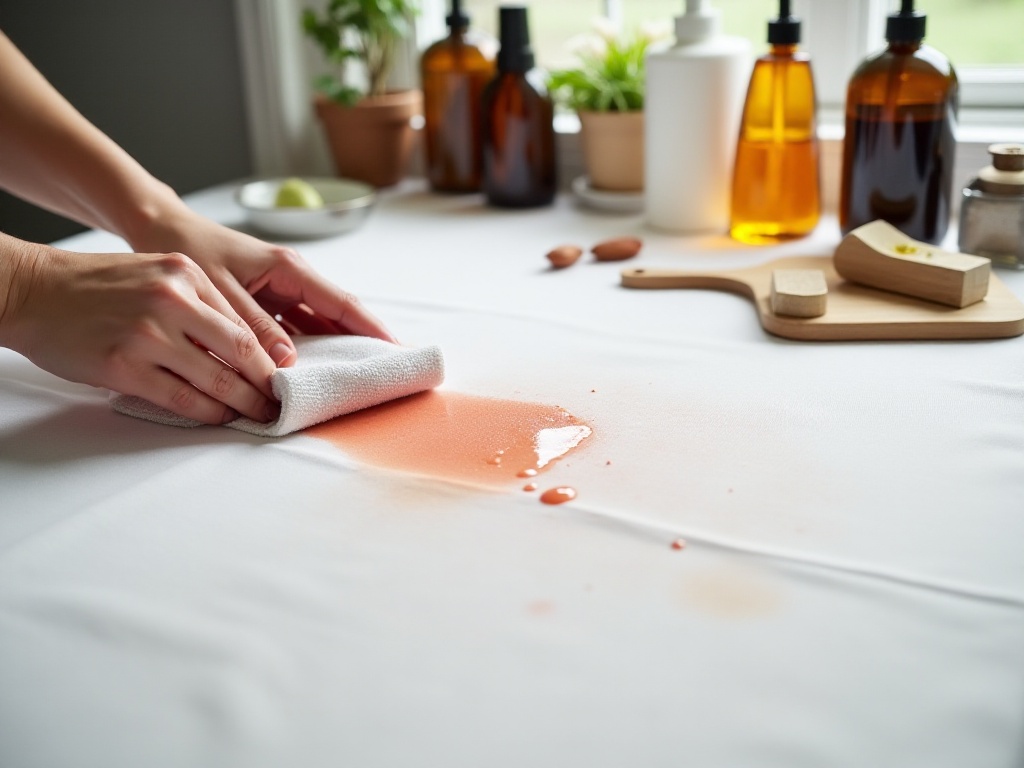Introduction
Hello everyone, I'm your lifestyle tips blogger. Today I want to share a particularly practical topic - how to properly care for our clothes. Many people have experienced the frustration of ruined, shrunk, or faded clothes. As a "former failure" who once accidentally shrunk a thousand-yuan cashmere sweater to children's size, I deeply understand this heartache. After years of exploration and learning, I've finally mastered a complete set of clothing care methods, which I'll share with you in detail today. I believe through this article, you can avoid the mistakes I made and give your clothes new life.
Classification is Key
Did you know? Proper clothing classification can make washing twice as effective. I used to throw all clothes into the washing machine together, and the results were predictable - white T-shirts turned pink, and wool sweaters shrunk to niece-size. After these painful lessons, I developed a super practical classification method. Honestly, before I started taking clothing classification seriously, I was a complete "laundry idiot."
Let's first talk about the most basic and important color classification. Dividing clothes into white, light, and dark colors seems simple, but there's actually a lot to learn. White clothes include pure white and off-white items, which are most easily dyed by other colors, so they must be washed separately. Light-colored clothes include beige, light pink, light blue, etc. - these can be washed together, but be careful with water temperature to prevent fading. Dark clothes are black, navy, dark red, and other dark colors - these clothes fade most easily, especially new ones.
It's particularly important to note that new dark clothes should be washed separately the first time, as they often bleed color. I once washed new black jeans with other clothes, and everything in the washing machine turned blue. That experience really left an impression - one pair of jeans ruined several beloved pieces. Later I learned that new dark clothes should be soaked in vinegar water for half an hour before first washing to effectively prevent color bleeding.
Fabric classification is equally important, which many people often overlook. Different fabrics need different care methods; blindly using unified washing methods can easily cause irreparable damage. Cotton and linen clothes are the easiest to handle - they're durable and can use regular washing methods. However, note that pure cotton clothes might shrink slightly on first wash, so cold water washing is recommended.
Wool items need extra care as they're particularly sensitive to hot water and rubbing, so it's best to hand wash in cold water or dry clean. That expensive cashmere sweater I mentioned was machine washed in hot water, now it's just a cautionary tale. Speaking of that cashmere sweater, it really pains me. I saved up for a long time to buy it, but due to one moment of laziness, I threw it straight into the washing machine. When I took it out, I couldn't believe my eyes - the perfectly fitting sweater had shrunk to doll size. Since then, I've been extremely careful with wool care.
Silk items are also challenging. Many people don't know that silk fibers expand when wet, and improper handling can easily cause fabric deformation or damage. So silk items are best hand washed, and water temperature must be kept below 30 degrees. Use special silk detergent, as regular laundry detergent is too alkaline and will damage silk fibers. I have a silk nightgown that I've always hand washed with special silk detergent, and it still maintains its original luster and texture.
Regarding synthetic fabrics, many people might think they're easy to care for, but that's not the case. While synthetic materials are washable, they're particularly prone to static electricity and easily attract dust. So when washing, it's best to choose neutral detergent, avoid high water temperatures, and avoid direct sunlight when drying. I have a favorite sports jacket made of synthetic fabric - I always hand wash it in warm water and dry it in shade, which maintains the garment's elasticity without creating unpleasant odors.
Knitwear care also requires attention. Many knit items can lose shape after washing, especially around the collar and cuffs. I now lay knitwear flat on a drying rack, which maintains their original shape. For heavier knits, it's best to place a towel underneath while drying to speed up water absorption and reduce the chance of deformation.

The Art of Washing
When it comes to washing methods, there's really a lot to learn. Machine washing is convenient but also where most mistakes happen. Many people think throwing clothes in the washing machine and pressing a button is enough, but this thinking is particularly dangerous. Correct machine washing methods not only get clothes cleaner but also extend their lifespan.
First, never be greedy about loading too many clothes. I used to think washing more at once saved time, but clothes ended up not clean and tangled. The correct approach is to fill the washing machine drum only about two-thirds full. This is because clothes need enough space to tumble during washing - if there are too many clothes, they won't get clean and will experience more wear.
I remember once, rushing to leave, I wanted to quickly wash all dirty clothes and stuffed the machine full. After washing, I found that not only were the stains not clean, but several pieces were tangled, with deformed collars and cuffs. Since then, I've learned this lesson and always control the amount - better to wash an extra load than compromise washing effectiveness for convenience.
Next is detergent amount. Many people think more detergent means cleaner clothes, which is completely wrong. Excess detergent not only doesn't clean better but leaves residue on clothes. I now use half the recommended amount, with better results. Actually, detergent's main function is to reduce water surface tension to help remove stains, not succeed through quantity.
Speaking of detergent, choosing suitable ones is also important. There are many types available - regular laundry liquid, powder, professional detergents, etc. For daily cotton and linen items, regular laundry liquid is sufficient. But for wool, silk, and other special fabrics, you must use specialized detergents. I now keep several different detergents at home, choosing based on different fabric materials.
Water temperature selection is also key. Many people habitually use hot water, thinking it better removes stains. Actually, this approach isn't suitable for all clothes. Generally, white cotton items can be washed in around 40-degree water, but colored items should use water below 30 degrees to prevent fading. For wool and silk products, water temperature must not exceed 30 degrees, or items can easily deform or damage.
For delicate items like silk and lace, it's best to hand wash properly. Remember this tip: hand washing water temperature shouldn't exceed 30 degrees, and use special neutral detergent. I once used regular detergent on a silk blouse, resulting in stiff, rough fabric. When hand washing, be gentle - don't rub hard, just lightly press to let the detergent fully saturate the fabric.
Rinsing is also important. Many people might think a few quick rinses are enough, but this easily leaves detergent residue. The correct rinsing method is to repeatedly rinse with clean water until it runs clear. I now rinse at least three times to ensure no detergent remains. For hand washing, adding a little white vinegar to the final rinse not only neutralizes remaining alkaline substances but makes clothes softer.
Spin drying also needs attention. Many people set long spin times for speed, but this easily deforms clothes. Generally, 3-5 minutes is enough for regular clothes. For easily deformed items like sweaters and knits, better to gently absorb water with a towel then air dry naturally.

Stain Removal Tips
When it comes to stain removal, time is crucial. Earlier treatment means higher success rate. Different stains need different treatment methods - blindly using one method not only won't remove stains but might make things worse. Let me share some particularly effective tips.
Red wine stains are among the most troublesome. If you accidentally spill red wine on clothes, don't panic. Immediately rinse with soda water, then sprinkle salt to absorb. I learned this method at a party. When a friend accidentally spilled red wine on my white dress, as I was panicking, a friend who works in restaurants immediately brought soda water and salt and taught me this method. Surprisingly effective - afterward, no trace remained.
Oil stain treatment also requires technique. Many people's first reaction to oil stains is washing with water, which is wrong. Oil and water don't mix - water washing won't remove oil stains but makes them spread wider. The correct method is to first absorb oil with talcum powder or cornstarch, let sit for several hours, then wash. Once while eating hotpot, I accidentally splashed oil on my new sweater. I immediately used tissue to gently absorb surface oil, then sprinkled cornstarch. After several hours, washed with clean water, and the oil stain completely disappeared.
Ink stains are also challenging. Once I accidentally got pen ink on my shirt cuff at the office and was really desperate. Later found a method online: make a paste with white vinegar and baking soda, apply to the stain, let dry then wash. Tried it, worked surprisingly well. This method uses the chemical reaction between baking soda and vinegar to break down ink without damaging fabric.
For stubborn stains like coffee, try this method: first rinse with clean water, then treat locally with professional stain remover. Wait a few minutes, rinse with clean water, then wash normally. I once had a beige wool sweater accidentally stained with coffee. After treating with this method, no trace of staining remained.
Makeup stains are also a common problem for many women. Especially foundation or lipstick on clothes - if not handled properly, can leave permanent marks. My experience is to first gently wipe the stain with professional makeup remover, then wash with warm water and neutral detergent. I've used this method many times with good results.
Fruit juice stain treatment is also important. Different fruit juices need different treatment methods. For strawberry stains, use a solution of lemon juice with a little salt; for grape stains, use diluted hydrogen peroxide. However, note that before using these methods, best to test on an inconspicuous area first to ensure it won't damage the fabric.

Storage Wisdom
Correct storage methods can make clothes last longer. My closet is now well-organized, thanks to some practical storage tips. Proper storage not only keeps clothes in optimal condition but makes our closets look more neat and orderly.
First is folding methods. Different types of clothes need different folding methods. T-shirts and shirts are best folded in half, then into rectangles - this saves space and prevents wrinkles. Sweaters and knits are best stored flat, not hung, to prevent shoulder deformation. Suits and coats should be hung on special hangers to maintain their shape.
Storage location is also important. Frequently worn clothes can be placed in easily accessible positions, seasonal clothes can be stored away. I now organize my closet by season, with current season clothes in most accessible positions, other seasons' clothes stored in storage boxes. This not only facilitates access but makes the closet look neater.
Pest and mold prevention must also be considered when storing. Especially when storing for season changes, ensure clothes are completely dry. I put desiccants and moth-prevention packets in storage boxes, effectively preventing mold and moth damage. For valuable items like silk and cashmere, I wrap them in acid-free paper before storing for better fabric protection.
Regular organization is also important. I've developed a habit of organizing my closet quarterly. Promptly disposing of rarely worn or outdated clothes not only maintains closet tidiness but helps us better know what clothes we have. While organizing, also check clothes' condition to promptly discover and address any issues.
Through years of experience accumulation, I deeply feel that clothing care is truly a science. As long as we master correct methods, we can maintain our beloved clothes in near-new condition for longer periods. Hope these shared experiences can help everyone and reduce detours on your clothing care journey.




